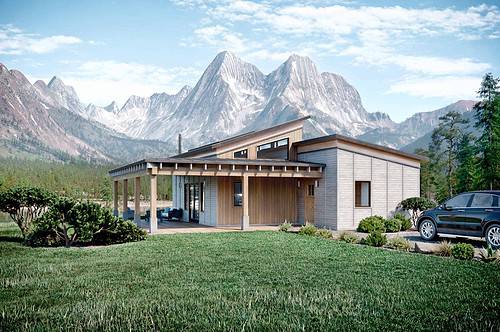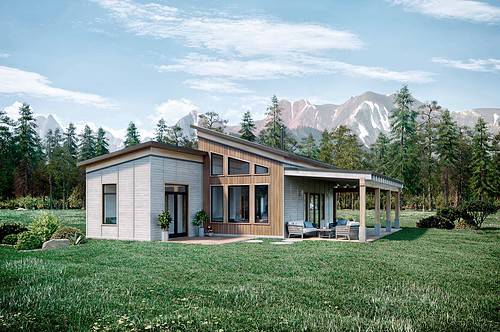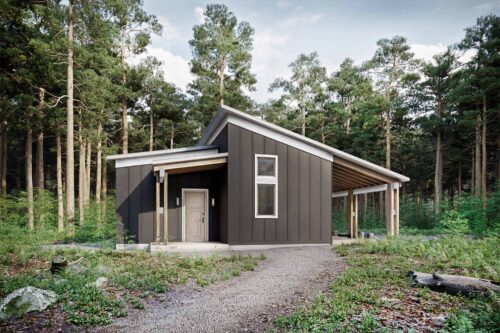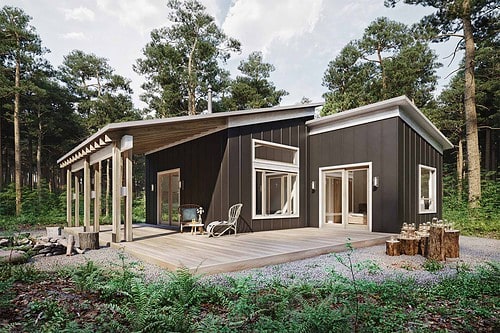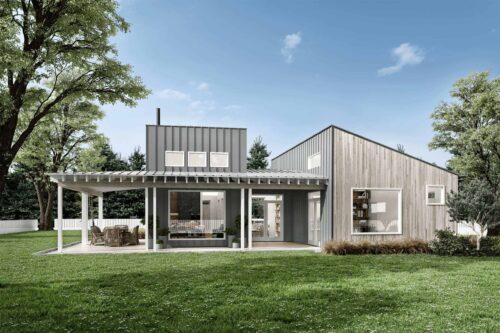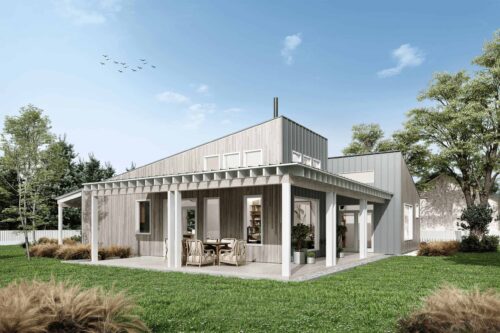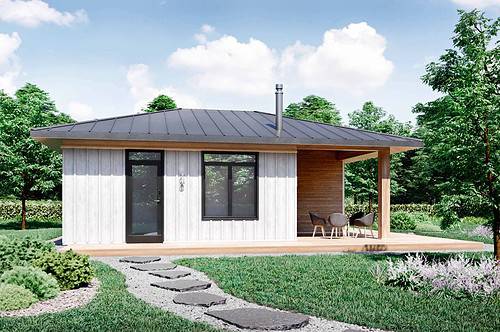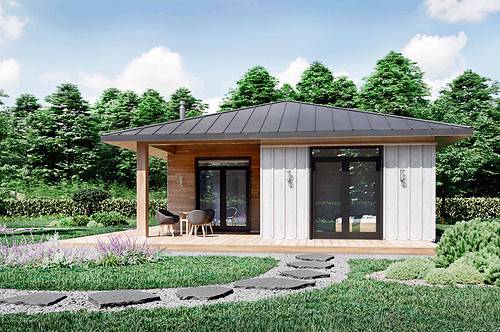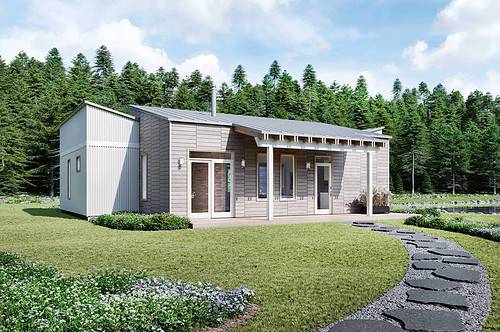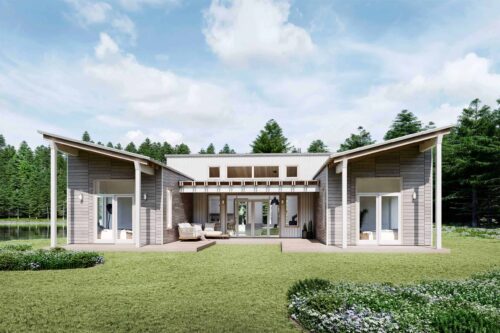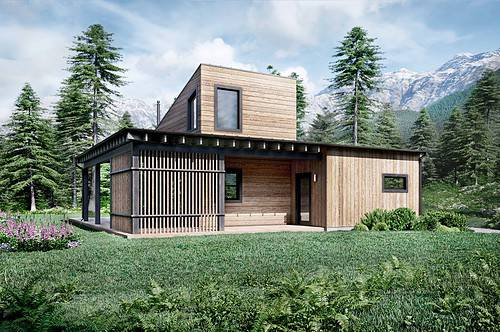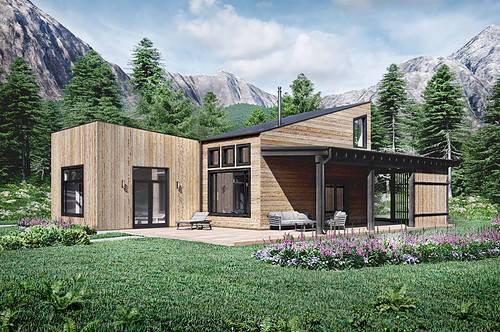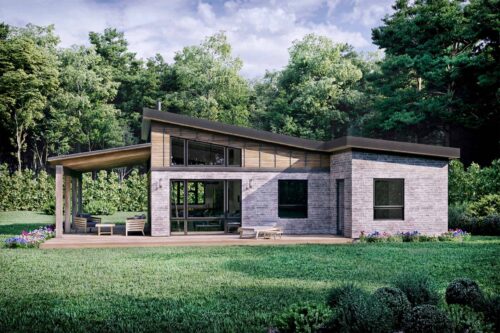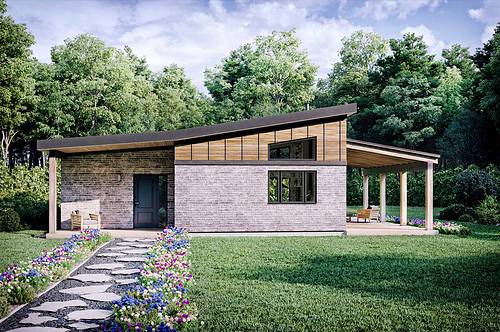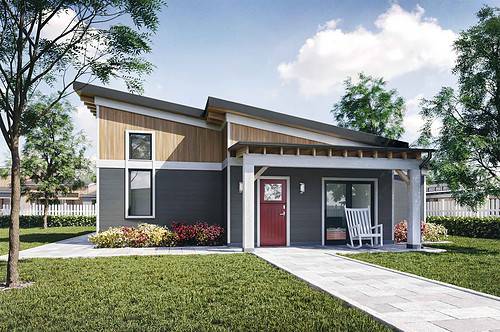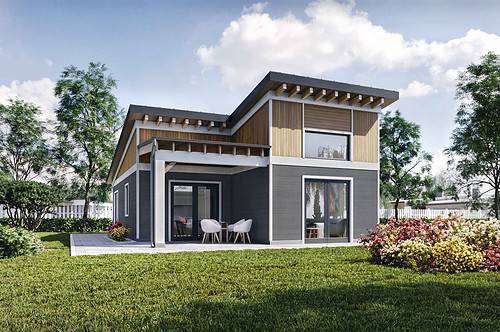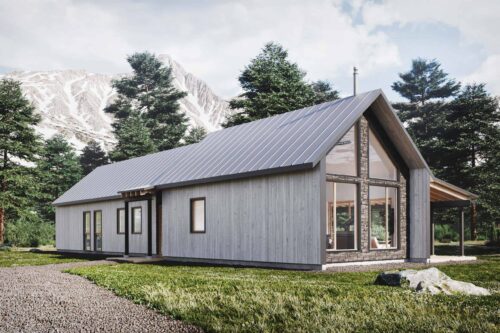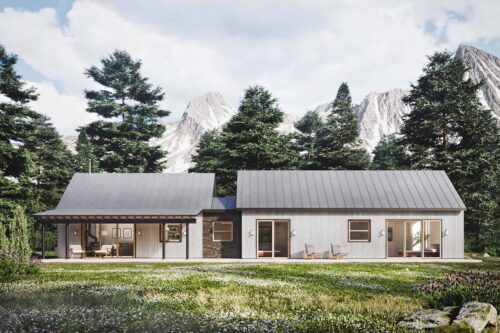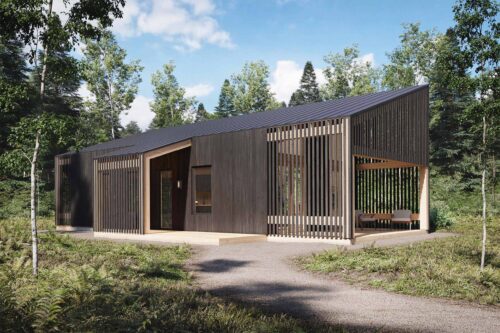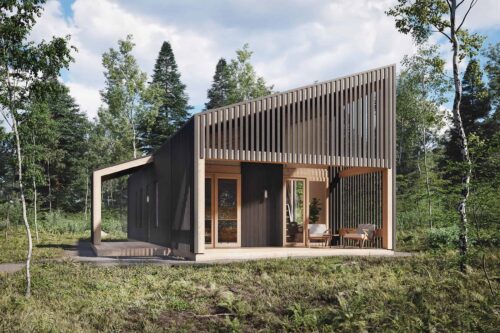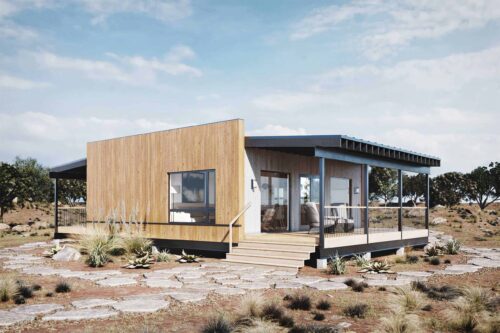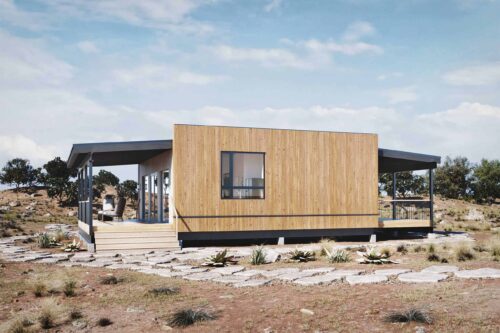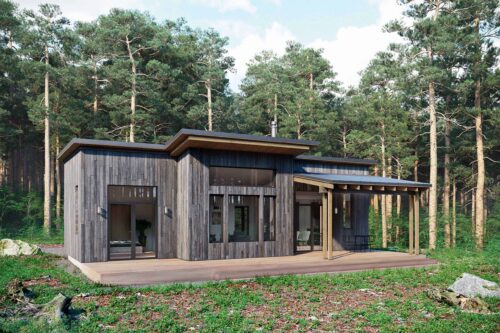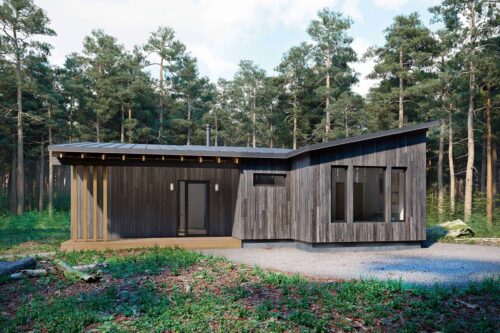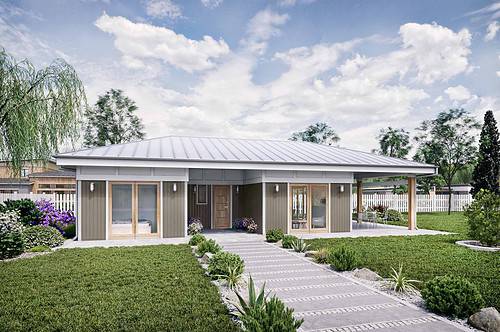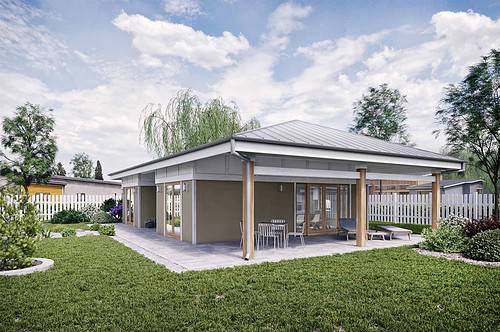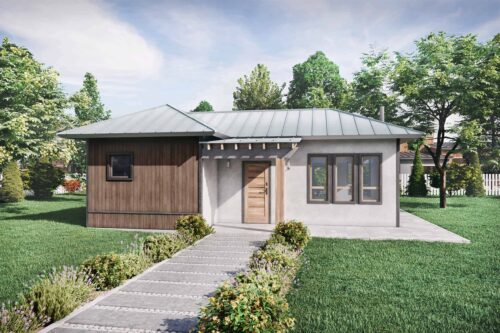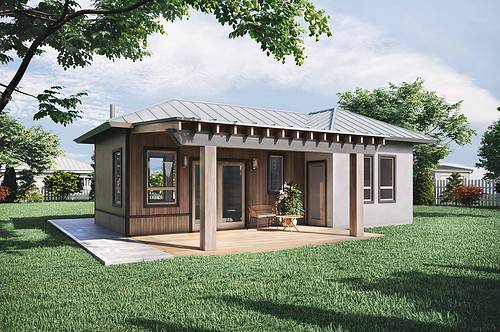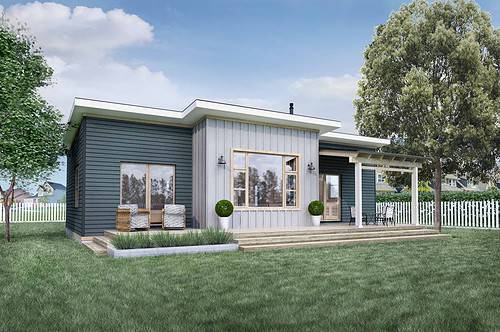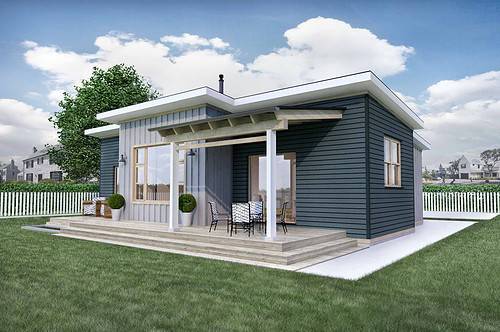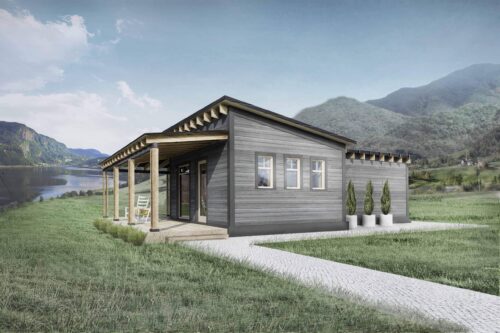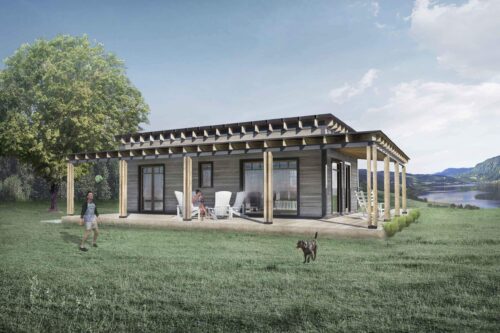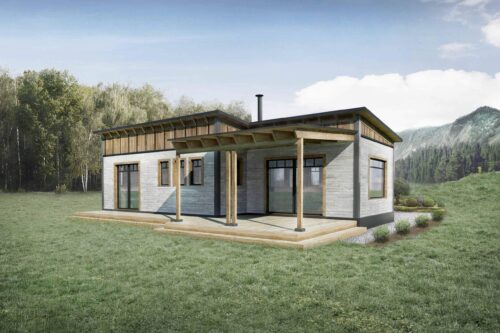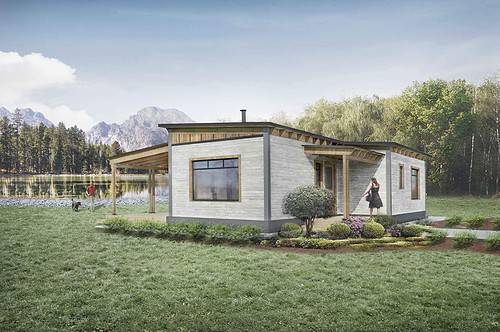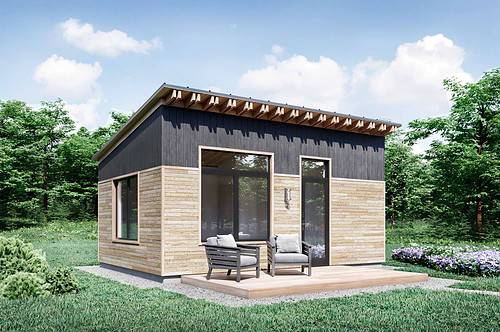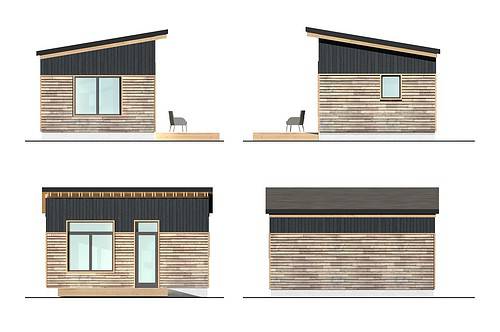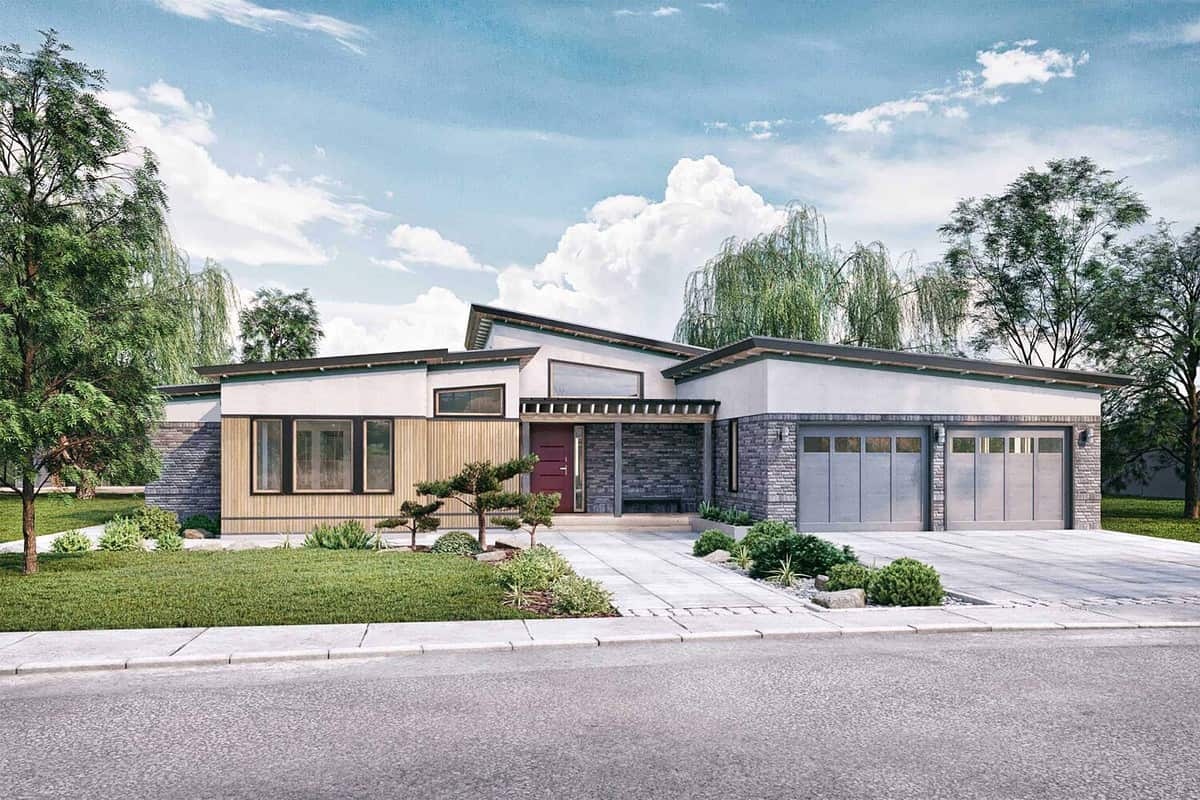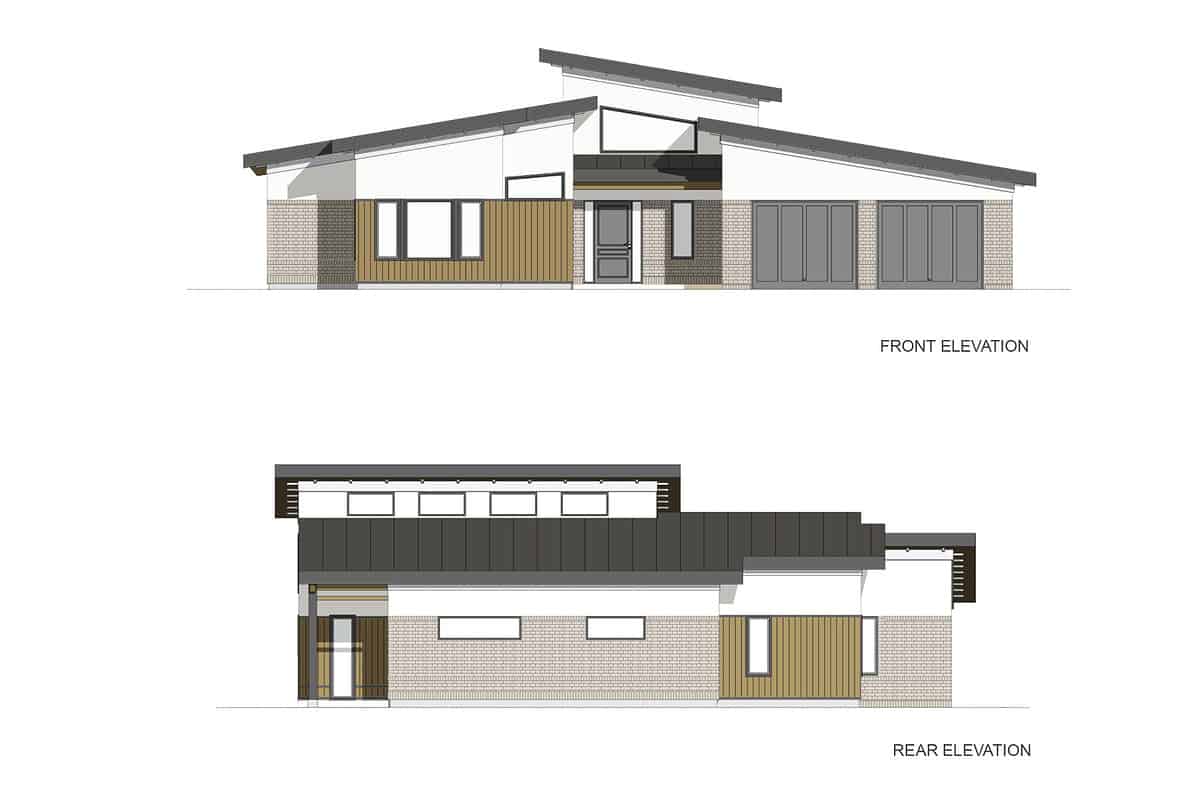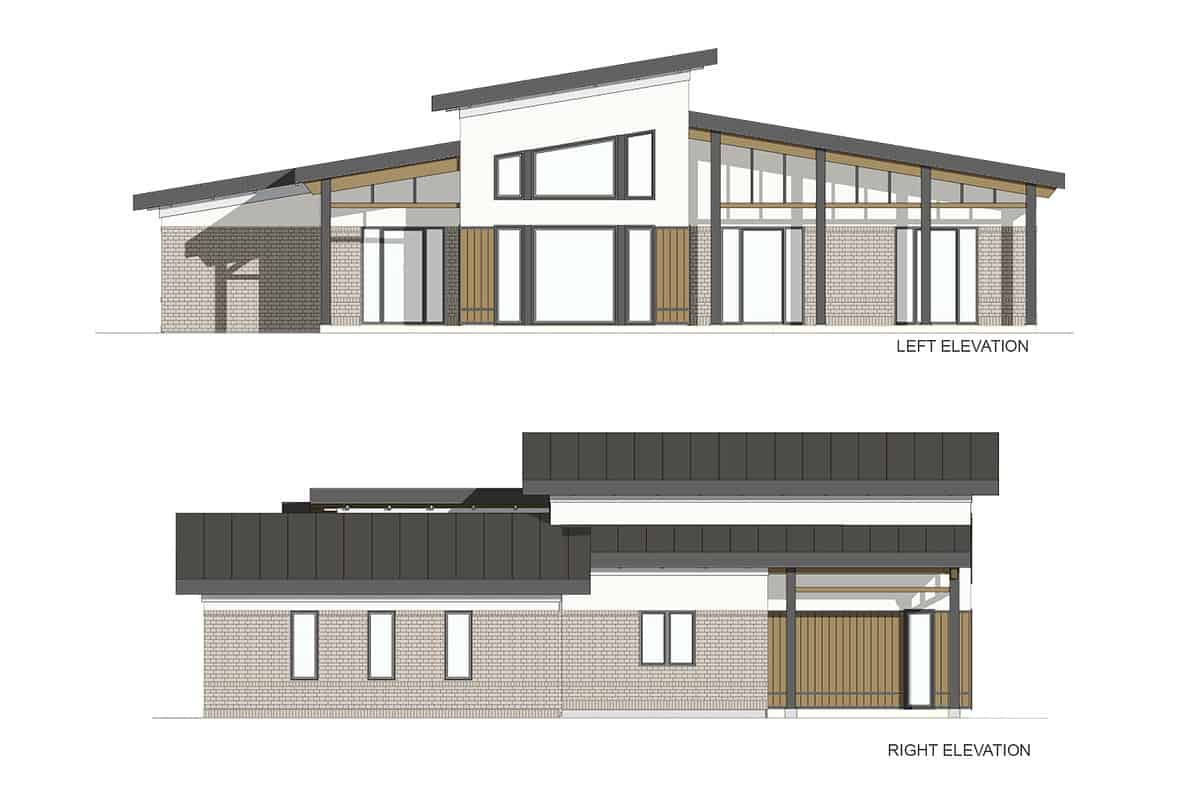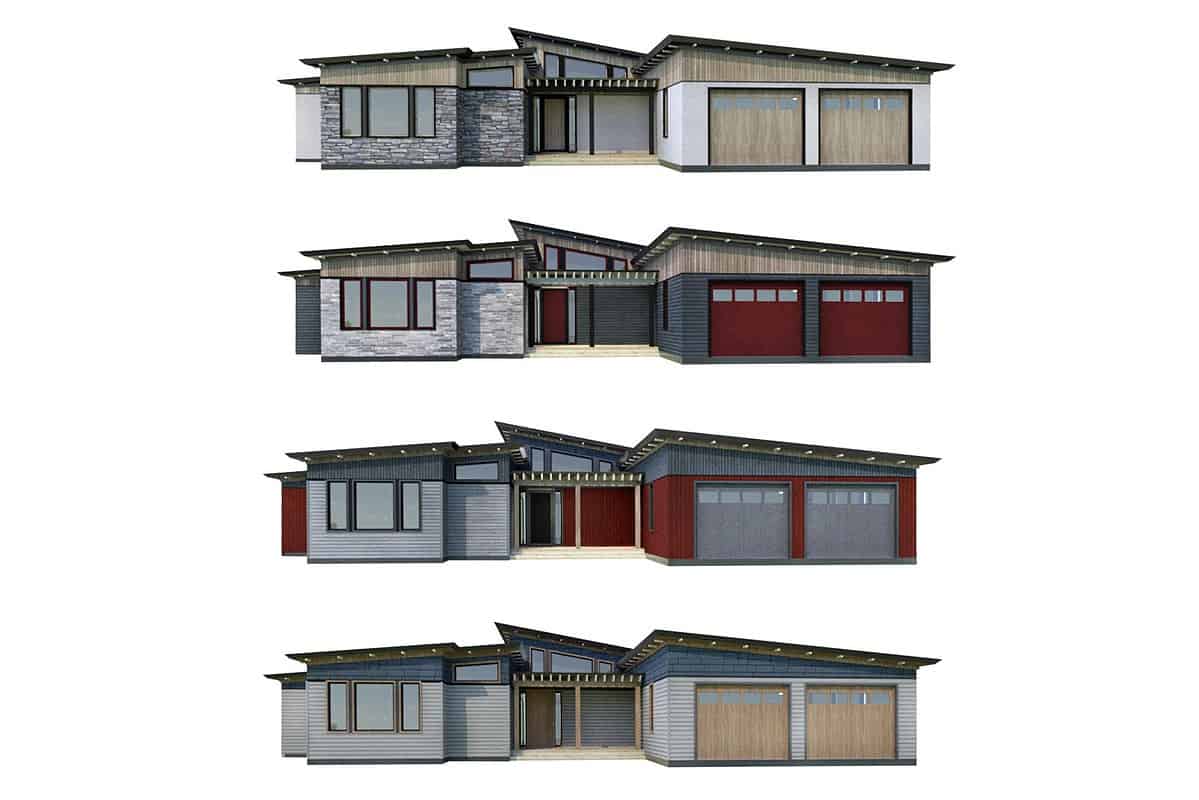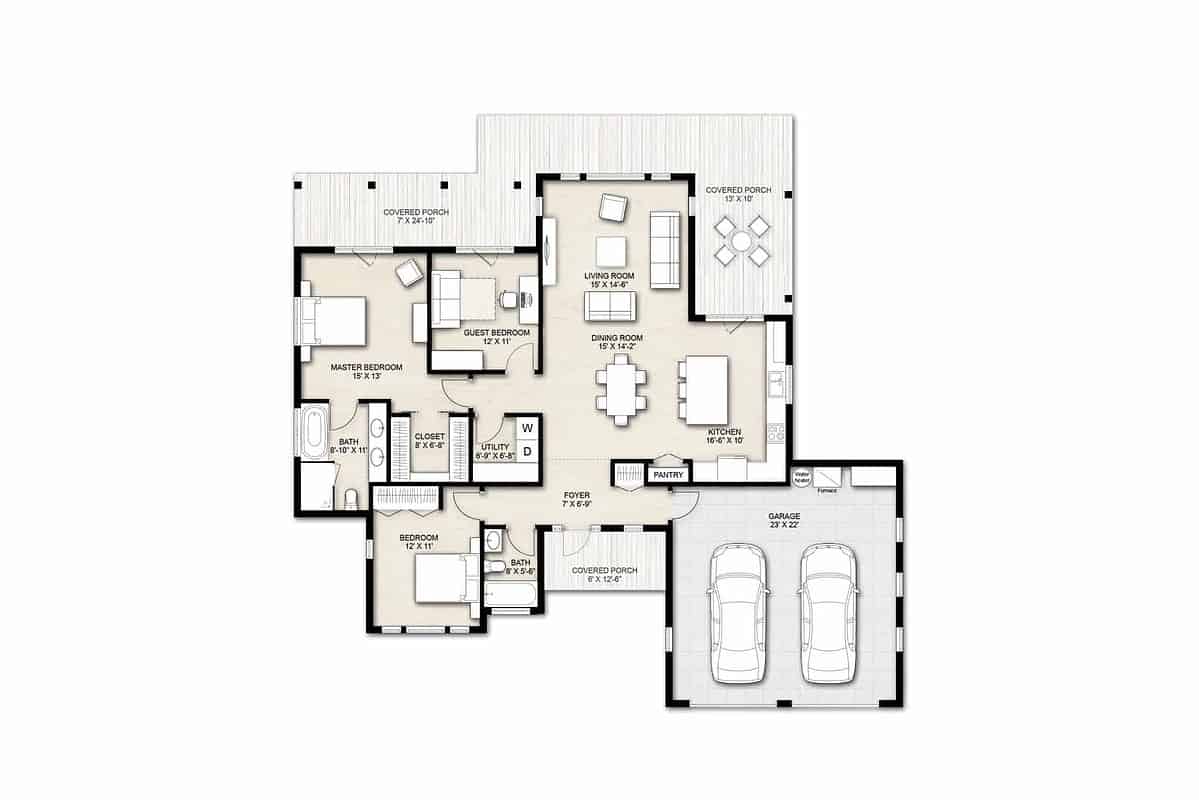No products in the cart.
Advantages of Raised Ranch House Plans
A raised ranch house plan offers several advantages that make them a popular choice across the country. Understanding these advantages can help homeowners make informed decisions about whether or not to choose this over other plans. Let’s quickly look at some of these advantages:
Efficient Use of Space
One of the primary advantages of raised ranch house plans is their efficient use of space. The split-level design allows for maximum use of the home’s square footage, with a main living space on the upper level and bedrooms and additional living space on the lower level. This design allows for ample space for families to spread out and live comfortably, while also providing privacy and separation between public and private living areas.
Cost-Effective
Raised ranch houses are cost-effective to build, as they require less land and building materials than traditional two-story homes. This can lead to significant savings in both construction costs and ongoing maintenance and upkeep.
Easy to Maintain
The design of a raised ranch home makes maintenance easy. With simple and straightforward construction and design elements, the need for ongoing maintenance and repairs is significantly reduced. In addition to this, it also makes it easier for homeowners to complete DIY projects and updates.
Versatile Design Options
Raised ranch house plans offer a wide range of design options, with variations in roof styles, exterior finishes, and interior layouts. This versatility allows homeowners to create a living space that is unique and personalized meets their individual needs and preferences.
Disadvantages of Raised Ranch House Plans
While a raised ranch house plan offers many advantages, there are also some possible disadvantages to be considered when designing or purchasing a home in this style.
Limited Curb Appeal
One of the primary disadvantages of raised ranch house plans is their limited curb appeal. The split-level design can be visually unappealing to some homeowners, and the raised entryway can make the home appear uninviting or unapproachable. Additionally, the roofline of a raised ranch home can be difficult to incorporate into landscaping and exterior design elements.
Limited Natural Light
Another disadvantage is their limited natural light. The main living space is typically located on the upper level, which may have limited access to natural light depending on the orientation of the home. Bedrooms and additional living space on the lower level may also have limited access to natural light due to their below-grade location.
Difficult Access
The raised entryway, which is a key feature of this type of home, can also present challenges for some homeowners. Stairs leading up to the main level may be difficult for elderly or disabled residents, and it can also make carrying groceries or other items up and down the stairs cumbersome.
Noise and Privacy Concerns
Noise and privacy concerns can arise from this plan’s split-level design. Bedrooms and additional living space on the lower level may be located close to noisy mechanical systems, such as the furnace or hot water heater, and this can disrupt sleep and relaxation. Secondly, the open floor plan of the main living space can lead to noise and privacy concerns for residents who prefer separate and enclosed living areas.



